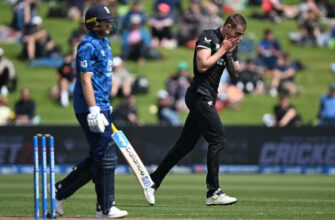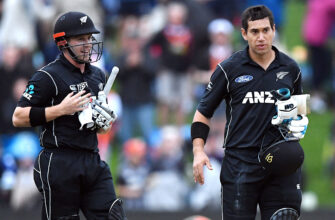In the grand theater of Test cricket, where narratives unfold over five arduous days, moments of split-second drama often etch themselves deepest into collective memory. Such was the case during the second Test between India and West Indies at Delhi`s Arun Jaitley Stadium, when a burgeoning masterpiece by young sensation Yashasvi Jaiswal was abruptly curtailed by the most unfortunate of dismissals: a run-out. The incident, cutting short an innings on the cusp of a double-century at 175, immediately sparked a fervent debate among purists and pundits alike: who bore the responsibility for this premature end to a promising knock?
The Morning After: A Masterclass Interrupted
Jaiswal, having elegantly reached 173 runs by the close of the previous day, returned to the crease on Saturday morning, poised for further dominance. The expectation was that he would calmly convert his substantial score into a landmark double-hundred. However, cricket, in its relentless unpredictability, had other plans. In the second over of the day, a delivery from Jayden Seales was driven towards mid-off. What followed was a fleeting moment of indecision, a micro-second misjudgment that proved fatal.
Jaiswal, perhaps fueled by the momentum of his previous day`s performance or simply a natural instinct for a quick single, set off. At the non-striker`s end, Shubman Gill, his batting partner, initially responded before halting, sensing an undeniable risk. The ball was heading straight to the fielder. Jaiswal, committed to the run, perceived Gill`s call to stay late. By the time he attempted to return to the safety of his crease, it was already too late. West Indies wicketkeeper Tevin Imlach, receiving a swift throw from Tagenarine Chanderpaul, dislodged the bails with a precision that left no room for appeal. A magnificent innings, on the precipice of greatness, concluded with an anti-climactic run-out at 175.
The Blame Game: Kumble`s Conviction vs. Ganga`s Nuance
Such a high-profile dismissal inevitably led to immediate dissection. Former India captain and cricketing legend Anil Kumble offered a rather blunt assessment, unequivocally placing the onus on the dismissed batsman.
“It was Yashasvi Jaiswal`s fault,” stated Kumble on Star Sports. “He wouldn`t have made it even to the non-striker`s end because it went straight to the mid-off fielder. There was absolutely no chance.”
Kumble further expressed surprise that the umpire didn`t even refer the decision to the third umpire, suggesting the clarity of the dismissal. He also noted a shift in Jaiswal`s approach that morning, suggesting it diverged from the measured mindset that had allowed him to build his monumental score.
However, Daren Ganga, the former West Indies opener, provided a more balanced, albeit still critical, perspective. Ganga posited that responsibility was shared between both batsmen.
“As a batter, sometimes when you`re on the move after playing a shot, you feel like you can make it. That was the case with Jaiswal – he felt he was already in motion and could get to the other end,” Ganga explained. “But when I look back at the replay, I felt it was 50-50. It`s a risk he shouldn`t have taken, especially being well set at the start of a new day.”
Ganga`s view acknowledges the inherent human element in such split-second judgments, where the instinct to score, especially after a long stay at the crease, can sometimes override prudent caution. The irony, of course, is that in a game of partnerships, a breakdown in communication, however slight, can have disproportionately severe consequences.
The Unforgiving Nature of Test Cricket`s Long Innings
This incident serves as a stark reminder of the unique pressures inherent in Test match batting, particularly when one approaches a significant milestone. Fatigue, the desire to maintain scoring momentum, and the subtle shifts in concentration can all contribute to moments of vulnerability. Jaiswal`s dismissal was not a technical flaw but a momentary lapse in judgment compounded by a miscommunication with his partner.
While the immediate focus was on the run-out, the innings itself was a testament to Jaiswal`s burgeoning talent. India, despite the loss of Jaiswal, went on to declare their innings at 518 for 5, with Shubman Gill converting his start into an impressive unbeaten 129. This recovery underscored the depth of the Indian batting line-up, yet it did not diminish the indelible question mark over Jaiswal`s premature departure.
Conclusion: A Lesson in Partnership Dynamics
The Jaiswal-Gill run-out will likely be discussed in dressing rooms and coaching manuals as a textbook example of the criticality of clear communication and mutual understanding in batting partnerships. While Kumble`s verdict points to Jaiswal`s rash decision, and Ganga offers a more shared blame, the underlying truth remains: in cricket, particularly at the elite level, a single misstep can unravel hours of painstaking effort. It’s a harsh lesson, perhaps, but one that underscores the relentless demands of the game.







